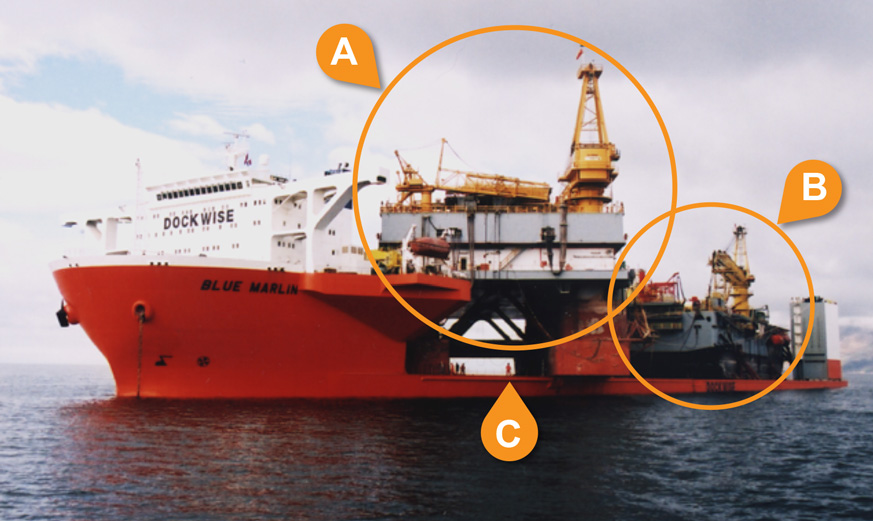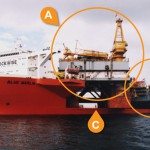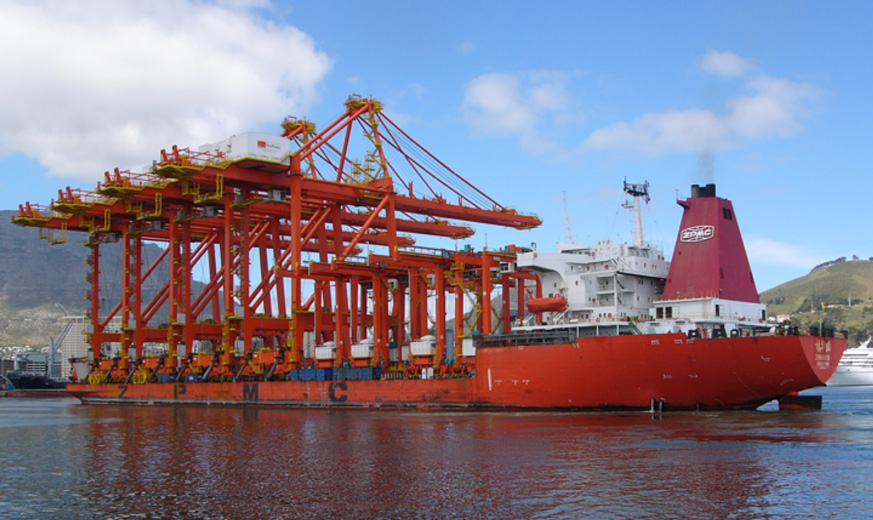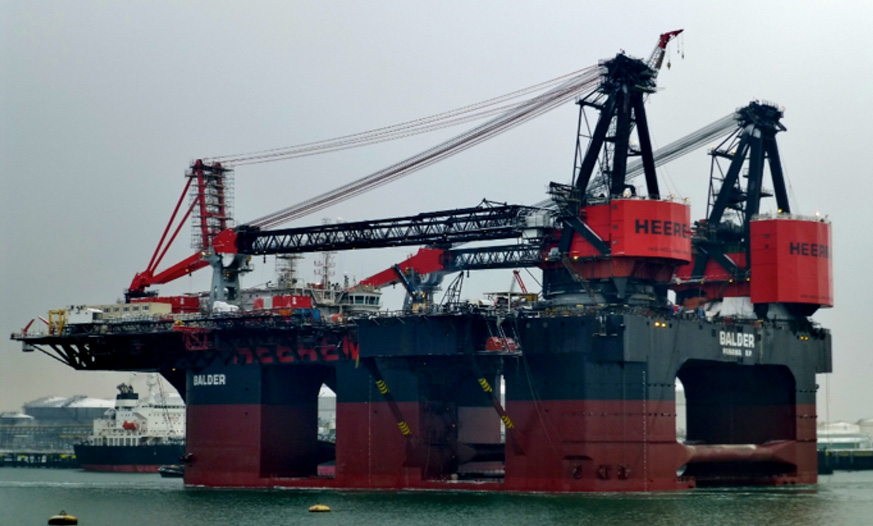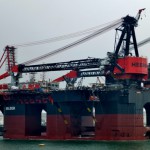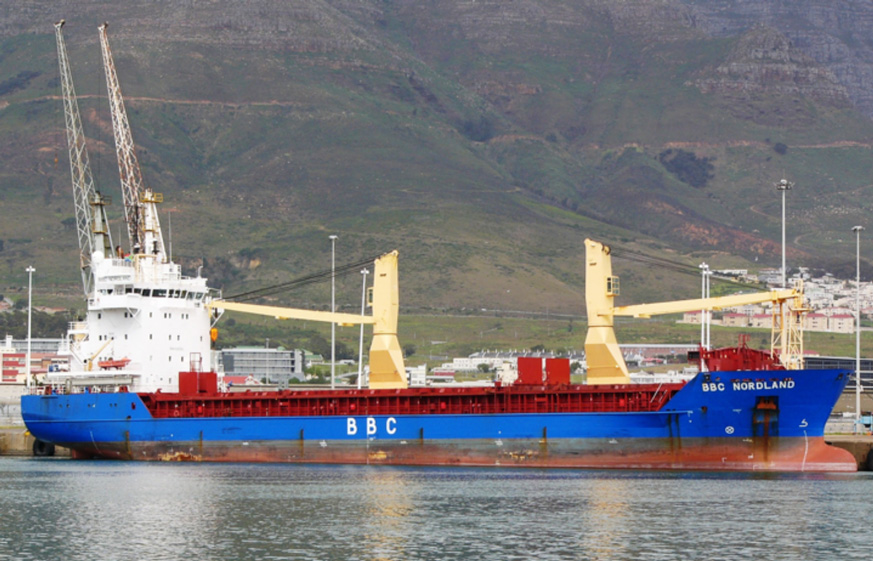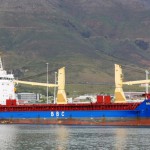When large, heavy items need to be transported, a specialised heavylift ship can be used. These items could be a large oil rig, platforms used in the offshore oil industry, large pieces of machinery, cranes, and sometimes, even some small ships need to be transported.
For floating objects (e.g. oil rigs, floating platforms), the specialised heavylift vessel will be semi-submerged through flooding special ballast tanks in the heavylift ship. The object which is the cargo (e.g. an oil rig or platform) will be floated onto the ship, water will be pumped from the special ballast tanks, and the ship will revert to her normal draught. In the process, the cargo deck rises above the water, and the cargo (the rig or platform) is lifted clear of the water. Once the cargo has been secured properly – often by welding it to the deck of the heavylift ship – the ship can then proceed to its destination.
At the destination, the reverse procedure is followed : securing welds or other securing measures are removed, the heavylift ship’s special tanks are flooded to semi-submerge her. The cargo deck is fully submerged and the cargo (the rig or platform) is then floated off. The water is pumped from the ballast tanks to restore normal buoyancy in the heavylift ship.



